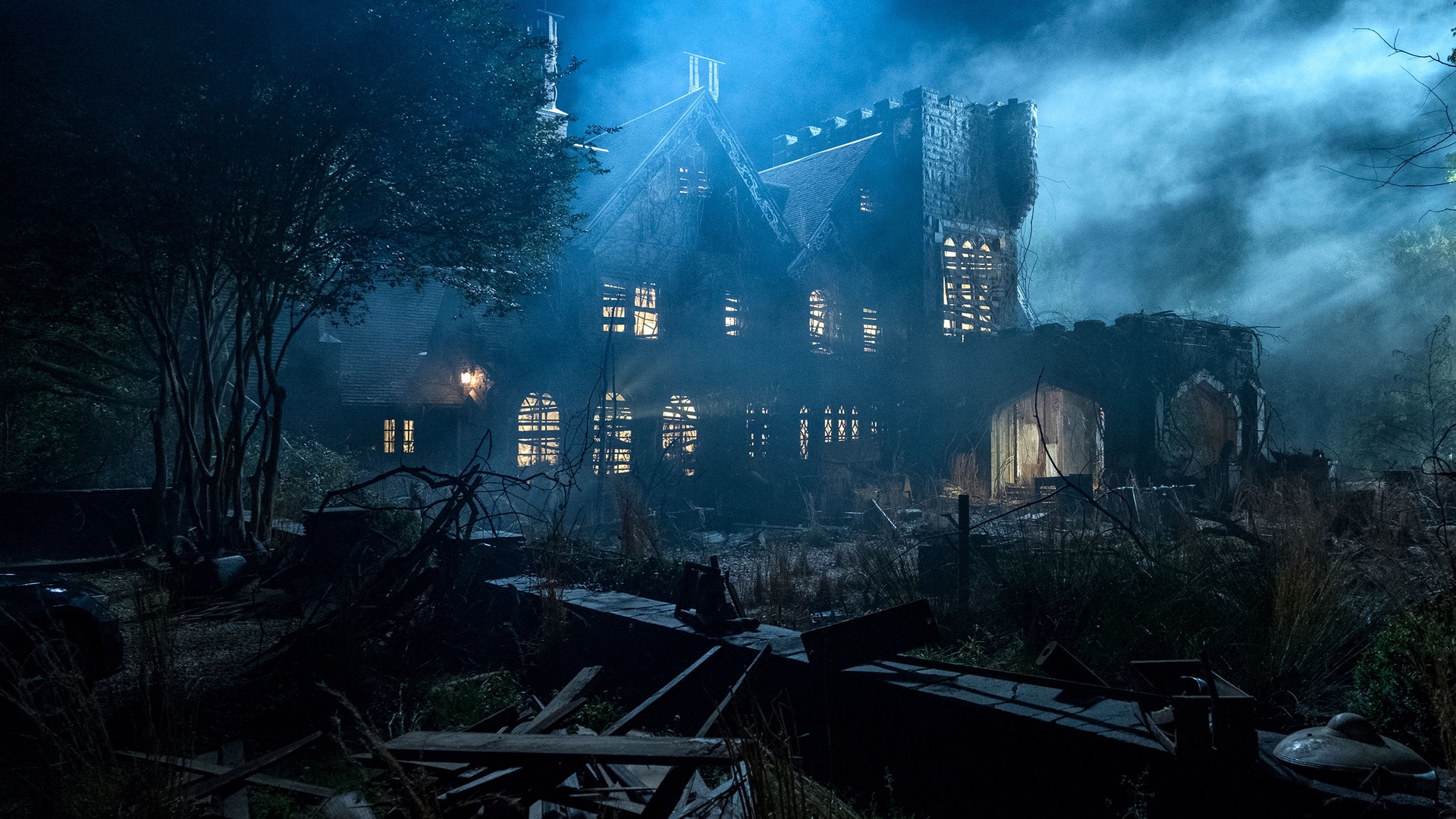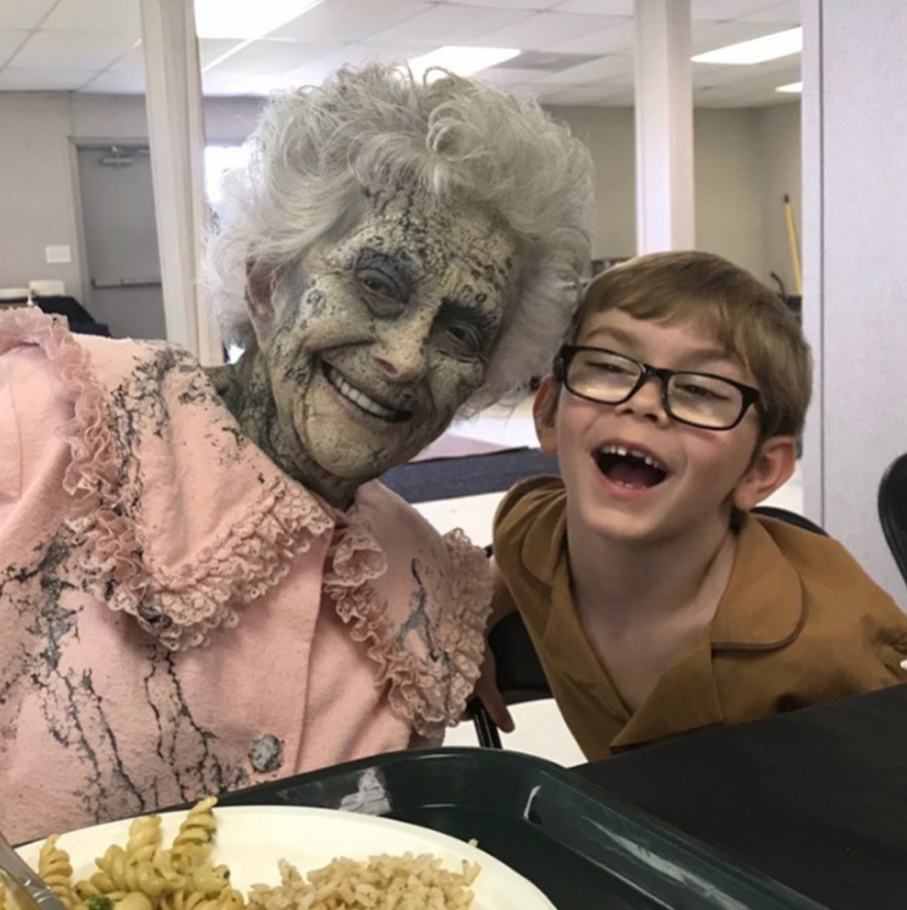Review by Clément Hossaert
Warning: Spoilers for Haunting of Hill House, and Hiroshima Mon Amour.
Lately, Netflix and Mike Flanagan’s Haunting of Hill House has been infecting people with a lust for ghosts, gothic architecture and a decent amount of melodrama. Honestly, the show is really good, and not just because it boasts a prestige TV direction, but more because it embraces the literary aspects of its characters and frights. Built on the foundations of the book written by Shirley Jackson, this new edifice gives each of its characters a wing, a corridor and a past to live on, and a burden of trauma to deal with. Throughout the ten episodes, viewers experience a quilt of past and present events, happening in Hill house and scattered on the east and west coast.
A lot of attention-grabbing moments aren’t made of the suspenseful wandering of characters throughout the haunted mansion, but are built on monologues given by side-characters that are able to shine in short stories peppered through the show. They remind viewers of the infectious nature of stories told, not shown, and offer a nice contrast to moments of visual storytelling, where present events find their echoes in imaginative flashbacks, either experienced by the character or made available to the viewer to clarify the behavior on display. This TV show offers a wealth of imaginative transitions between past and present that coalesce in the fantastic episode 7, which brings the whole family together. It is an episode that takes flashbacks and flash-forwards as a fluid matter that pours in and out of places, melting together the older sister’s Funeral Home and their childhood house in lengthy shots. This works less like the gimmicky Birdman, and more like the masterful Alexander Sokourov’s Russian Ark. Themes of childhood trauma and the way adults incorporate it into their life is the leitmotiv of the show. This gives the five Crain children some defining traits that make them all interesting and unique in the way they try to make sense of it, or refuse to: denial, lust for control, addiction, and depression. But they all deal with something that makes the gothic pulp of this show: ghosts. Instead of going the Paranormal Activity way—ergo the boring way—with jump scares made of banging doors and moving furniture, Haunting of Hill House has ghosts taken right out of a scary novel: a 1950s apparition with a broken neck and nightgown, a flying silhouette in a derby hat. One of the strengths of the show is that it never shies away from ghostly apparitions focused on traumatizing children with their nightly scares.
This dichotomy between fireside storytelling and actual recreation of real-time haunting sets something about the way traumatic experiences are dealt with in the show. Evocative stories are oftentimes the only way we, or our next of kin, can share their sorrowful experiences about the loss of a loved one or the violence one has suffered suffered. The visual nature of The Haunting of Hill House brings about what is, assuredly, one of the most efficient ways of conveying trauma. And to understand about how it started, we need to do our own campfire story about 1969’s Hiroshima Mon Amour.
Time is out of Joint.
Alain Resnais and Marguerite Duras built together what was considered at the time an arthouse film, wholly original in the way it portrayed the triggering effects that Riva, the main character, experiences. The famous first shot of the film shows two bodies in the act of lovemaking. Dissolves and cuts bring back the bodies with ash and glitter, and the viewer understands that the poetic dialogue you hear between the lovers aims at drawing a parallel between the sex scene and the explosion of the atom bomb at Hiroshima in 1945. The Japanese lover the main character meets makes her think of her German lover during World War II. Streets of Hiroshima become the streets of Nevers, and the nerve reflexes of an asleep, contented Japanese lover becomes the quivering hand of the German that was just shot. The superimposition of both images, the montage, and the writing make it clear that Riva is experiencing associations between the traumas that a city experienced and her own loss. Triggers are not about objective links between objects everybody see. The trigger and the trauma are constructions made of an emotional fabric. It binds synapses together in an indestructible bond, creating a time-breaking connection. For trauma survivors, time is out of joint, and the remnants of the past are present in a sadness you can’t appease, a shape you can’t hug, and a cry you can’t silence. Filmmakers can make art of this through the use of echoes and visual rhymes that bring the meaning a character is experiencing emotionally to an aesthetic realization for the viewer.
Lately, technologies digital imagery has allowed past and present to exist in single shots, with better trickery than before. In episode 7, the character of the dad wandering around in the house feels like a videogame character in an impressive horrorhouse that Del Toro and Kojima would have spawned. What might have existed in shot-reverse shot is now a game of spatial recollection. Hiroshima Mon Amour did this in its first fifteen minutes, offering a POV of Riva, wandering in the city through museums and hospitals. A woman’s hair that fell from her head because of radiations was a direct echo of the hair villagers cut after the liberation of France as punishment. These are examples of objects, places, and artifacts of pain that you keep close to your heart because of the hurt they brought and the relief they provide in their still being there.
In Haunting of Hill House, corridors, rooms, and open and closed doors bring a sense of inescapability, in a maze-like factory of ghosts. Houses are made of stairs and wings, positional memories, and spatial emotion. If Proust was getting high on the past with edibles, space is the new opioid that Flanagan wields. One of the smartest ghosts of the show is precisely a ghost you didn’t recognize as one, because you likely thought it was part of the corridors: a voiceless side character, quiet enough that you don’t suspect him, but with just the right amount of uncanniness. Triggers are passive agents of haunting, because you forget they are there, until they jump at you. Many of the ghosts of Haunting of Hill House are allegorical manifestations. The House is a force that feeds on insecurities, death, and tragedies, but ultimately, it’s the way characters feed on their own trauma that define the magnitude of their pain. Sometimes, ghosts that characters see are just part of a coping mechanism. The character’s choice in the matter is either to be haunted by ghost, or invite them to come in. Allow yourself to feed them like you would the Babadook. Maybe that’s why we pass along ghost stories and infect one another with the doubt that the past might slip into the present. We conjure them—both as the witches and the priests we are—through fireside stories and visual trickery, because we can’t help but want to represent what strikes us the most. When the past is not striking us with its painful reminders, that is when we sometimes feel lost in a house we don’t recognize. For those plagued with constant reminders, time is, sadly, of no consequence. It has no grip on things that are permanently broken. Trauma might be the single thing that brings the whole artificiality of time as human construct to a halt. It might be a chilling realization to understand that people that are gone are never really gone—much like when when UIysses walked the path of hell and met the ghost of a mother he just couldn’t hug. Our lost ones haven’t only left the imprint of their loving memory; it might give you a bit of solace to know where to locate them, conjure them, and to be a little more familiar with the maze of your memories. Stories are the only things that make some kind of dream-like sense, once home is not a place you can come back to, because the family that lived in it are gone. Maybe that’s why we like to scare ourselves with fake ones: We prepare ourselves for what’s bound to happen and in a sense, already always did.
The actor playing young Luc has learnt how to live with his ghosts. Be like Luc.
PS - In case you need scary stories about Capitalism and Marxism, I wholeheartedly recommend Specters of Marx by Jacques Derrida. It helped me with this article.


